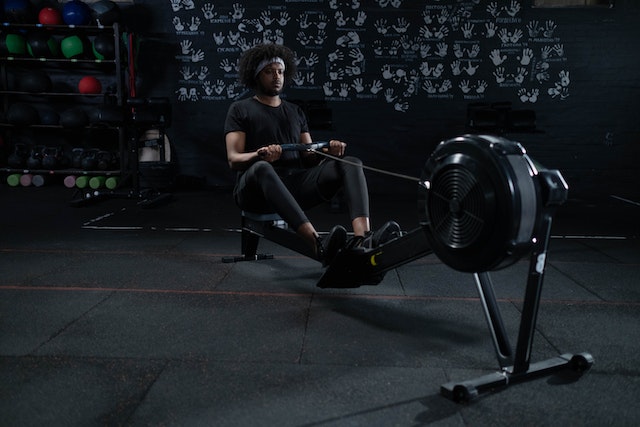If you’re searching for a simple and highly effective workout to improve your posture, strengthen your shoulders, and prevent injury, then look no further than face pulls. This simple exercise targets several muscles at the same time including the upper back, shoulders, and rotator cuff. In this article, we’ll explore the science behind face pulls and how they can help improve your health and well-being. Whether you’re a gym-goer or an athlete, this exercise is a must-try for anyone looking to take their fitness game to the next level.
What Is A Face Pull?
A face pull is an exercise that targets the upper back, shoulders, and rotator cuff muscles. You can perform this using a cable machine, resistance bands, or other equipment that provides resistance. To perform a face pull, you have to start by attaching the resistance to a high pulley or anchor point. This exercise will help you to strengthen the muscles of your upper back and shoulders and also improve posture, and prevent injury by strengthening the rotator cuff muscles. It can be used as a warm-up exercise before heavy lifting or as part of a regular exercise routine.
Equipment Needed For Face Pull
To perform face pulls, you will need access to a cable machine or resistance band. If you’re using a cable machine, make sure it has a high pulley and a rope or handle attachment. In the case of the resistance band, you will need a sturdy anchor point to attach the band, like a door anchor or a pole.
Here are some additional equipment options you may consider:
- Cable machine: This is the most common and convenient option for performing face pulls. Usually, most commercial gyms have cable machines with high pulleys and attachments for ropes or handles.
- Resistance band: Resistance bands are a portable and affordable option for performing face pulls. They come in various resistance levels, and you can easily adjust the tension by changing the length of the band or using a different resistance level.
- TRX suspension trainer: The TRX suspension trainer is a popular piece of equipment that allows you to perform face pulls and other exercises using your body weight as resistance.
- Dumbbells: You can also perform face pulls with dumbbells by lying face down on an incline bench and pulling the weights towards your face.
How To Perform Face Pull Properly?
Here is a step-by-step guide on how to perform a face pull properly:
- Begin by setting the pulley or resistance band to a high anchor point, then attach a rope, handle, or resistance band to the cable.
- Grasp the handle or rope with an overhand grip, with your palms facing down and your thumbs wrapped around the handle.
- Step back to create tension in the cable or resistance band, keeping your feet shoulder-width apart and your knees slightly bent.
- Engage your core and maintain a straight spine throughout the exercise.
- Pull the handle or rope towards your face with your elbows high and wide, while squeezing your shoulder blades together. The handle or rope should come to your forehead or just above your head.
- Hold the contraction for a second, then slowly return the handle or rope to the starting position, maintaining tension in the cable or resistance band throughout the movement.
- Repeat the exercise for the desired number of reps, usually 10-15 per set.
Common Mistakes You Should Avoid
Like any exercise, face pulls require proper form and technique to be performed effectively and safely. Here are some common mistakes to avoid when performing face pulls:
- Pulling the weight too high: When performing face pulls, it’s essential to keep the elbows high and wide and pull the weight towards the face without going too high. Pulling the weight too high can put excessive strain on the shoulders and neck, leading to injury.
- Rounding the shoulders: It’s essential to maintain good posture and keep the shoulders down and back throughout the exercise. Rounding the shoulders can reduce the effectiveness of the exercise and increase the risk of a shoulder injury.
- Jerking the weight: Jerking the weight or using momentum to pull the weight towards the face can reduce the effectiveness of the exercise and increase the risk of injury. It’s important to use controlled movements and also focus on squeezing the shoulder blades together.
- Using too much weight: It’s crucial to start with a lightweight or resistance band and gradually increase the weight as you become stronger and more comfortable with the exercise. Also, using too much weight can compromise your form and increase the risk of injury.
- Neglecting to engage the core: Engaging your core muscles throughout the exercise can help maintain good posture and stabilize your body during the movement.
By avoiding these common mistakes, you can perform face pulls safely and effectively, achieving optimal results for your fitness goals. If you’re unsure about your form or technique, consider consulting a certified personal trainer or fitness professional.
FAQS
How often should I do face pulls?
It’s recommended to perform face pulls 2-3 times per week, as part of your upper body or back workout routine. You can also do this as a warm-up exercise. As with any exercise, it’s important to allow your muscles time to rest and recover between sessions.
Can face pulls help with shoulder pain?
Yes, face pulls can be an effective exercise for improving shoulder stability and reducing the risk of injury. For those who experience shoulder pain or discomfort, it’s important to consult a healthcare professional before starting any new exercise program.
Can I do face pulls with a resistance band?
Yes, you can perform face pulls with a resistance band. Attach the band to a sturdy anchor point, such as a door anchor or pole, and hold the band with both hands. Make sure to maintain good posture and use controlled movements to perform the exercise safely and effectively.

